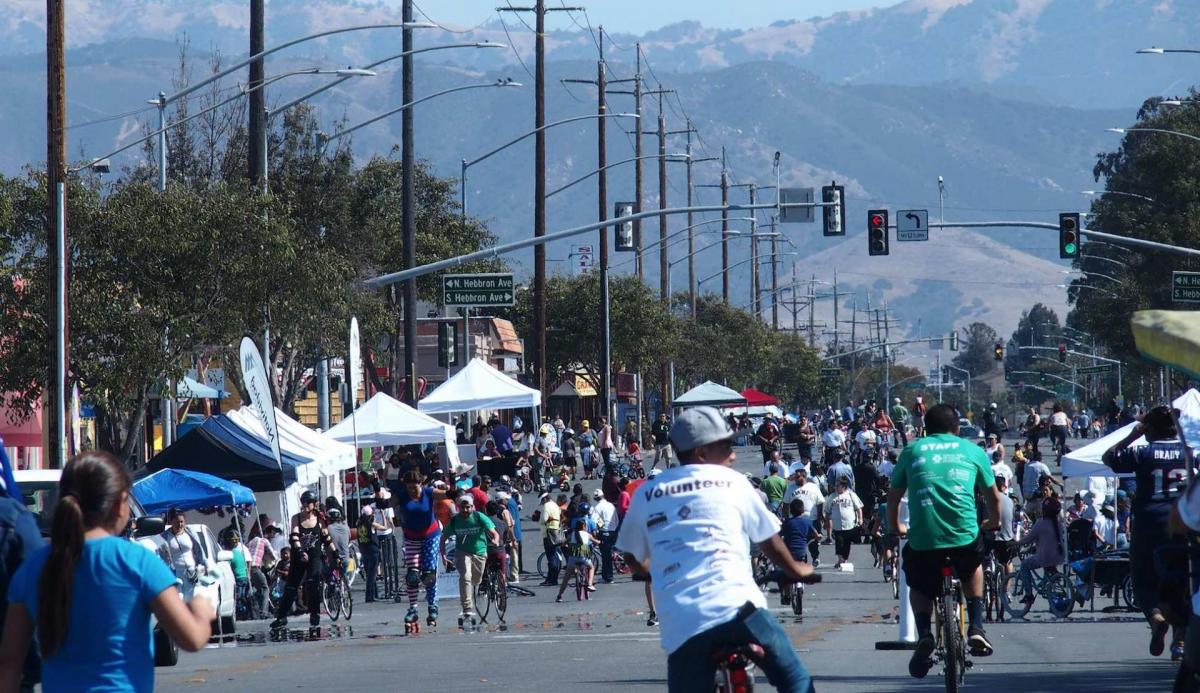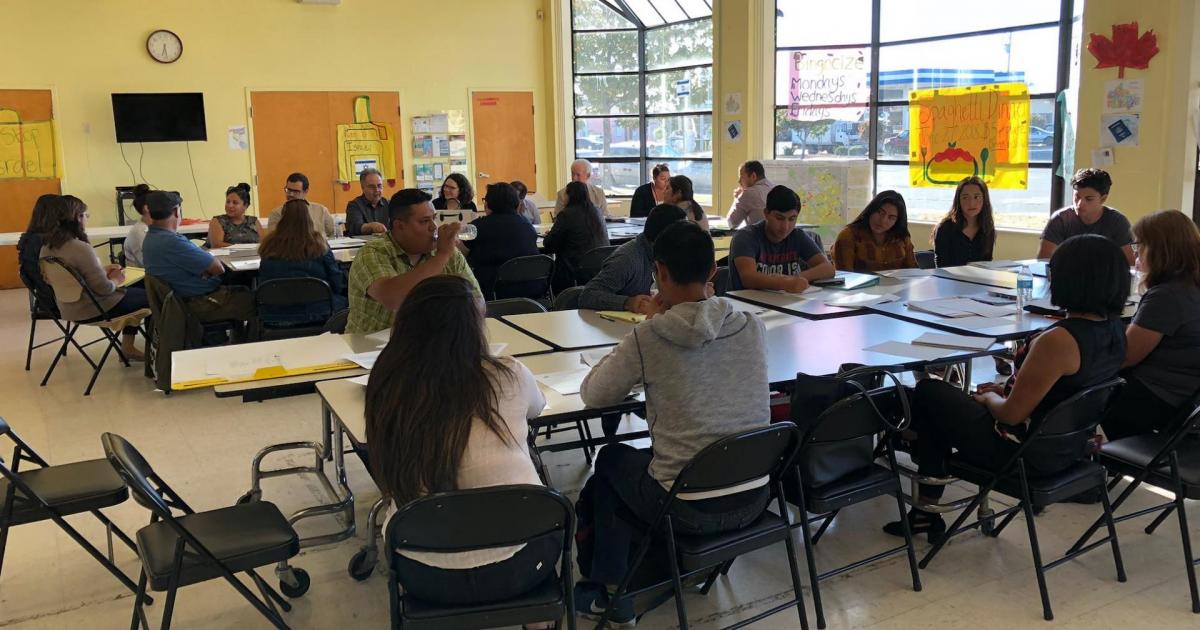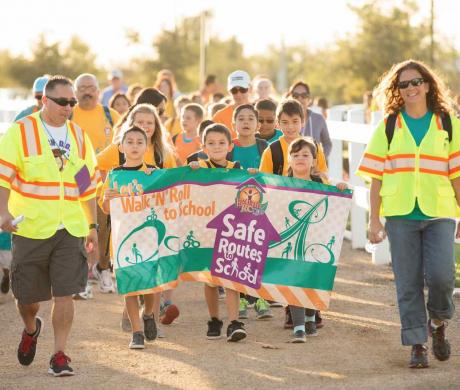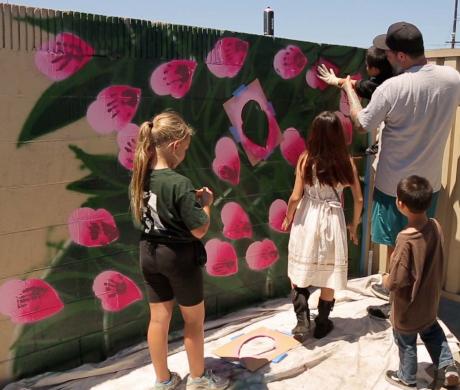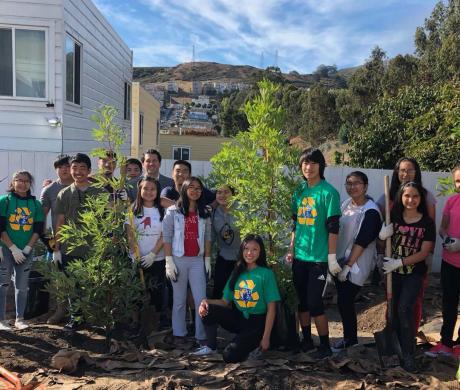Alisal Vibrancy Plan Addresses Equity Issues in Salinas
The City of Salinas won the Award for Excellence in the Enhancing Public Trust, Ethics, and Community Involvement category of the 2020 Helen Putnam Award for Excellence program. For more information about the award program, visit www.helenputnam.org.
The Alisal is a historically disadvantaged, 95 percent Latino community on the east side of Salinas (pop.162,222). Over 30 percent of Alisal residents (many of whom are farmworkers) live in poverty, and 50 percent of its population is under the age of 25. Most of the Alisal’s neighborhoods were developed when the area was part of unincorporated Monterey County before the City of Salinas annexed it in 1963. Because Salinas never had the resources to make all the necessary infrastructure improvements, the differences between the Alisal and the rest of the city are readily visible.
East Salinas Building Healthy Communities (BHC) is a group of residents and community-based organizations working to support community engagement and leadership in the area. During a 2013 meeting in the Alisal about the city’s General Plan Economic Development Element, BHC pointed to the concurrent development of a Downtown Vibrancy Plan and advocated for a similar investment and vibrancy plan for the Alisal. In response, Salinas dedicated budget resources for funding and staffing, and work started on the Alisal Vibrancy Plan (AVP) in 2016.
Building Community Ownership in the Process and Plan
The AVP is the product of years of visioning, community organizing, and relationship-building between the City of Salinas and Alisal residents. Created with equity at its core, it is an action-oriented, community-driven plan to alleviate and reverse decades of neglect and underinvestment. Community engagement strategies developed through this process to eliminate barriers to participation have become best practices for community engagement throughout all city departments. The plan’s inclusionary engagement process led to residents’ ownership of and pride in the AVP, which increases the possibilities for successful implementation. The Salinas City Council unanimously accepted the plan in November 2019.
“The city knew that it did not have the connections to conduct truly representative outreach with this community on its own, especially if it wanted to build trust and meet the needs of disenfranchised residents and have an authentic engagement process,” said Megan Hunter, director of community development for Salinas. Consequently, the city partnered with BHC to form a Technical Advisory Committee (TAC) of community-based organizations, whose work already focused on the Alisal, to develop a strategy for in-depth, equity-rooted engagement that would enable residents to drive the plan’s content.
Residents knew their input was essential. Miguel Alcala, who served on the AVP Steering Committee, said, “In order for the city to make a change, people have to ask for it. If we don’t ask for what we want, how are they supposed to know what we need?”
To help focus on equitable activities, the TAC adopted the Spectrum of Community Engagement to Empowerment developed by the Action Council of Monterey, a local organization focused on empowering people in Monterey County to transform their communities.
The spectrum ranks activities on a 0–5 scale, from marginalization to empowering for impact. The TAC set out to create as many processes as possible toward the high end of the spectrum, sought to remove barriers to participation, and worked to provide a wide range of engagement opportunities.
To ensure a representative plan and process, the TAC also developed the roles, responsibilities, and process for forming a steering committee of Alisal residents. The TAC selected members who reflected Alisal demographics and had direct ties to its neighborhoods and a strong desire to improve their community. This resulted in a multigenerational group that gave the AVP a diverse perspective. The city provided capacity-building training for steering committee members, so in addition to guiding topics and content, members collaborated with staff on the design and implementation of large workshops and co-chaired five working groups. The working groups empowered residents to speak as neighborhood experts in developing the AVP and afforded stakeholders, officials, and technical advisors an opportunity to explore and create content around specific topics identified by the steering committee and community.
Meetings Designed to Be Accessible and Convenient
Meetings, workshops, and open houses were all conducted in the Alisal. These were held after typical working hours and were 100 percent bilingual, predominantly conducted in Spanish. Full meals and child care were provided, which allowed more Spanish-speaking residents, parents, and youths to participate. Workshops also featured music and dance performances by local youths to celebrate the Alisal’s rich culture and encourage attendance. For those unable to attend the formal meetings, staff and city partners also conducted over 24 pop-up activities at community events and in public spaces.
This multifaceted approach reached over 2,000 residents and led directly to systemic changes in how Salinas conducts outreach and approaches removing barriers to participation. In 2019, the city’s Finance Department reached out to the Community Development Department to help design its first-ever public workshop for the annual budget, which was conducted bilingually and offered food and child care.
Plan Has a Beneficial Ripple Effect
The AVP is also driving positive changes for the Alisal community through recent implementation efforts. When AVP leaders elevated concerns about displacement resulting from a possible rental housing inspection program, the city created a committee that includes TAC and AVP leaders to ensure representation in the ongoing development of housing policy. This committee is also researching ways to fund legal support and additional measures to enforce the AB 1482 (Chapter 597, Statutes of 2019) tenant protections that took effect Jan. 1, 2020.
The Economic Development Working Group made it clear that many minority small-business owners had frequent challenges with permitting due to language barriers and the complexity of regulations. The group recommended adding a bilingual business navigator to the Permit Center. As a result, the city is establishing this position through its CARES Act funding, with a focus on the Alisal area.
Art programming was also an AVP priority, and the steering committee identified creation of a mural as a short-term implementation project. Through the mural project, the city is collaborating with the community on its execution and on sponsoring art classes for youth taught by the muralist (pre-COVID). The city will continue project and policy collaboration and annual community meetings to assess progress and re-establish priority actions.
Creating a Model for Future Public Engagement
The Alisal Vibrancy Plan is the result of advocacy and a collaborative process with city staff, community-based organizations, and residents that increased community involvement, public dialogue, and trust and brought new leadership into planning processes. The AVP has become the model for future engagement in Salinas — and in other communities that want to enhance involvement — by embracing resident empowerment and committing to removing participatory barriers for all stakeholders. Putting the community at the center of this process helps ensure its success.
Contact: Jonathan Moore, senior planner, Community Development Department; phone: (831) 775-4247; email: jonathanm@ci.salinas.ca.us
Related Resources
[cross link to articles in this issue]
[Executive Director’s Message] Bold Approaches and New Ideas to Solve Old Problems
Advancing Racial Equity in Local Government
Long Beach Launches Office of Equity to Engage, Educate, and Serve
South San Francisco Develops Equity Solutions Tailored to the Community
Photo Credit: Courtesy of the City of Salinas


